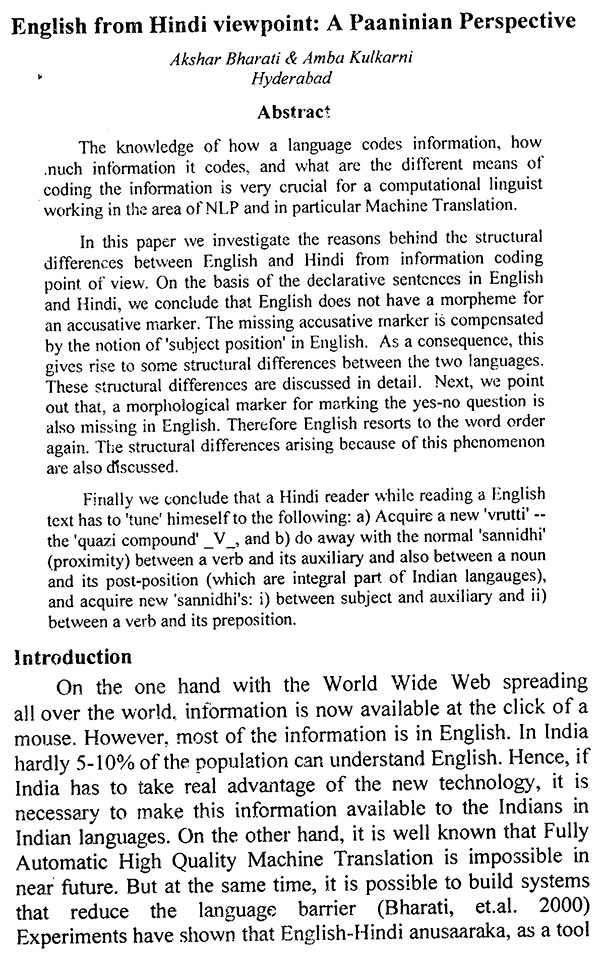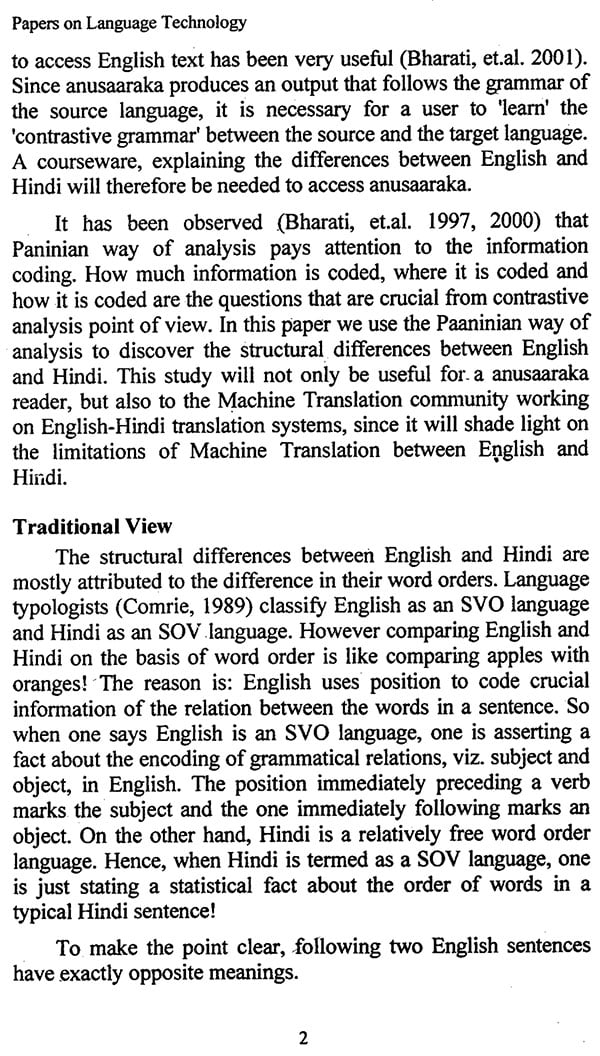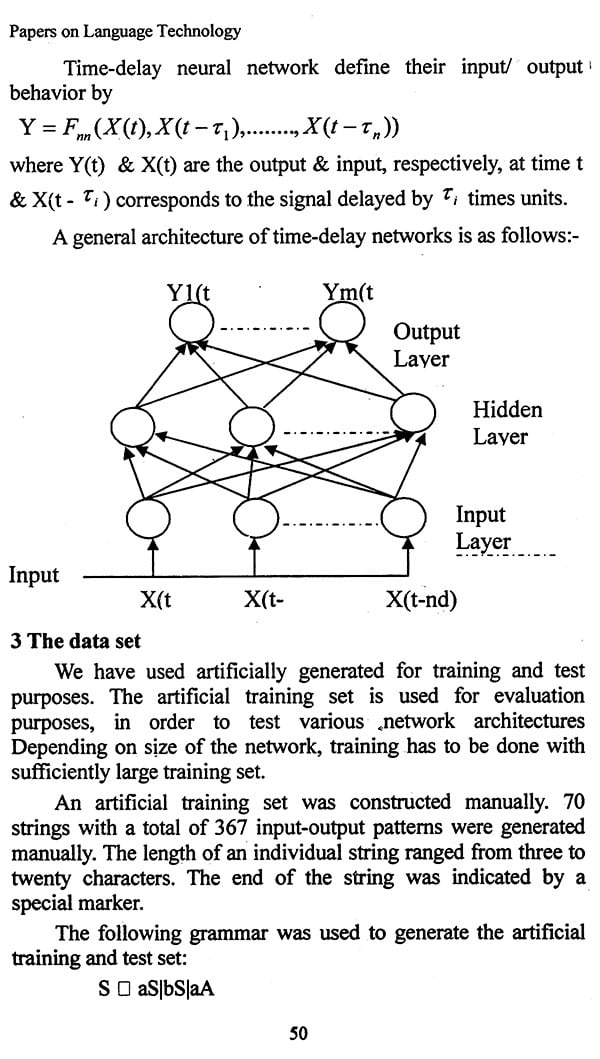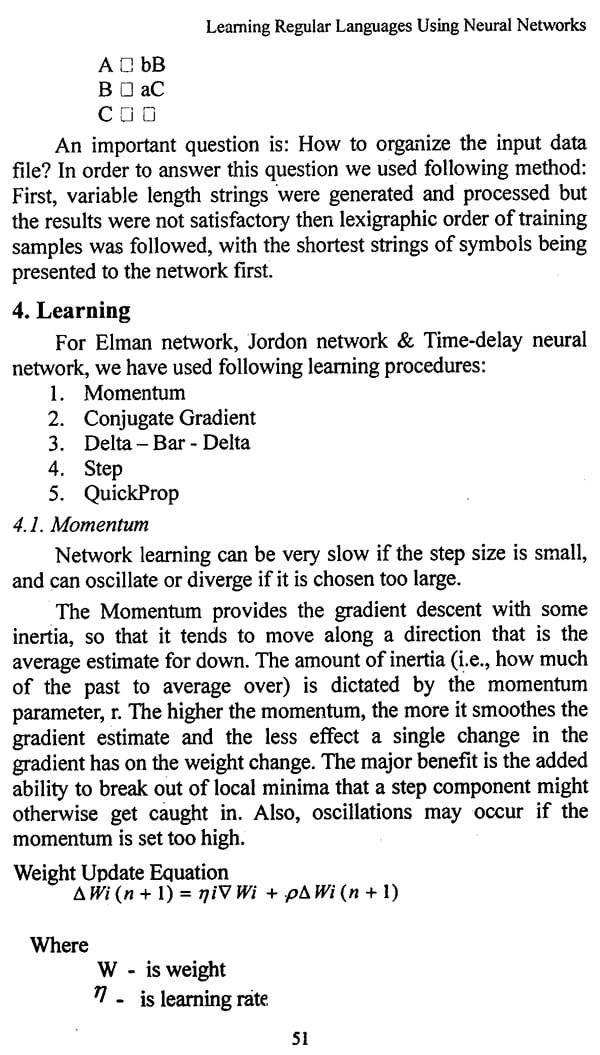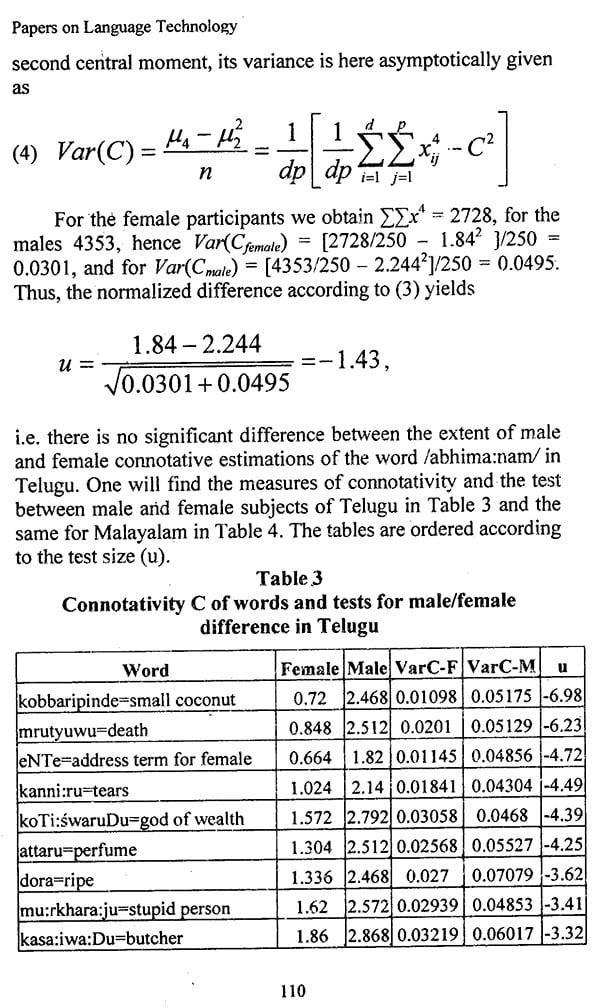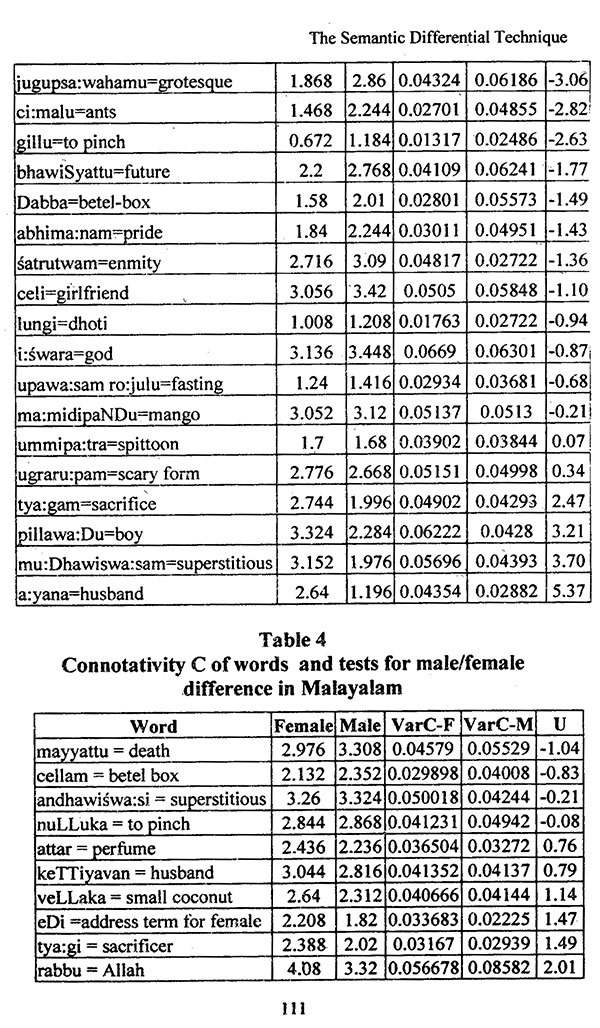
Papers on Language Technology
Book Specification
| Item Code: | NAX107 |
| Author: | Panchanan Mohanty and S. Arul Mozi |
| Publisher: | Dravidian University Campus |
| Language: | English |
| Edition: | 2008 |
| ISBN: | 9788190639149 |
| Pages: | 118 |
| Cover: | PAPERBACK |
| Other Details | 9.00 X 6.00 inch |
| Weight | 170 gm |
Book Description
He is a rich harvest of research papers on Language Technology, a timely produce celebrating the Linguistic Society of India's Platinum Jubilee, a collective contribution of high academic stature supported by the nation's knowledge resource centres like the University of Hyderabad, Dravidian University, Central Institute of Indian Languages and the country's pivotal body, U.G.C.
Perches Mohanty is a Professor in the Centre for Applied Linguistics & Translation Studies, University of Hyderabad. He has published widely on various aspects of applied linguistics in India and abroad. He was President of Dravidian Linguistics Association and Chief Editor of Indian Linguistics, journal of Linguistic Society of India.
Arulmozi is an Assistant Professor in the Department of Dravidian & Computational Linguistics, Dravidian University. His area of prime research interest is Computational Linguistics and Tamil NLP.
That the foundations of Indian culture were deeply ambedded in Dravidian culture is now an inconvertible fact. Dravidian culture is one of the most ancient cultures of the world. Those cultures, slightly contemporaneous to one another, slowly started fading out. However, the primordial Dravidian culture continues to thrive without losing its quintessence despite the apparent changes in systems of dress and address.
Dravidian University is established through a Legislature Act by the Government of Andhra Pradesh in 1997 with the extended support of Southern States at Kuppam, a tri-lingual junction in the south-western part of Andhra Pradesh, 4 km. away from Karnataka, 8 km. from Tamil Nadu and about 4 hours drive from Kerala, to promote a spirit of integration among the speakers of Dravidian languages, thus building a strong path of National Integration and to advance research and studies in Dravidian language which are about 27 both inside India and outside like Baluchistan and to create a strong awareness of the integrated character of Dravidian Studies, a major branch of Indology.
One of the main objectives of Dravidian University is to unearth the linguistic, cultural and historical traits common to the Dravidian languages that have spread across the whole of India and the neighbouring countries. Keeping this in view, the University established the Department of Dravidian and Computational Linguistics in November 2005. The department carries out research in the area of Dravidian linguistics and computational linguistics. Publishing research works in both these areas is another important activity of the department.
The present volume is a collection of research papers on language technology presented in the Platinum Jubilee Conference of the Linguistic Society of India organized at the University of Hyderabad in collaboration with Central Institute of Indian Languages, Mysore and Dravidian University, Kuppam during 6 and 8 December 2005.
Language technology is playing a vital role in the age of information technology. It is often called Natural Language Processing which consists of computational linguistics and speech technology as its core areas. The study of language technology is a miultidisciplinary enterprise that requires expertise in the areas of linguistics, computer science and allied disciplines, such as cognitive science, etc. Communicating with computers using natural languages is the ultimate goal of this discipline and building translation engines, information retrieval systems, etc. are some of its application:areas.
This book contains nine research papers written by 15 different authors. The papers cover both the theoretical aspects of linguistics that are useful in building technology tools as well as some applicational aspects of language technology, such as Dialogue Systems, WordNet, Information Retrieval systems, etc.
I hope that this volume will be a useful reference for the study of language technology with special reference to Indian languages.
When we decided to hold the Platinum Jubilee Conference of the Linguistic Society of India under the sponsorship of Centre for Applied Linguistits and Translation Studies, University of Hyderabad from 6 to 8 December 2005, we planned to have sessions on language technology alongwith other sessions keeping in view the thrust area of our Centre's UGC Special Assistance Programme, i.e. language technology. This event was cosponsored by the Central Institute of Indian Languages, Mysore and Dravidian University, Kuppam. In fact, Prof. G. Lakshminarayana, Vice-Chancellor of Dravidian University, showed keen interest to publish the language technology papers in the form of a book. We are glad that it is happening now. We have put together the nine selected papers on language technology which were presented during this Conference. This book is useful for those who have an inclination towards language technology. The papers included here cover various aspects of the concerned area.
The first paper "English from the Hindi viewpoint: A Paninian Perspective" by Akshar Bharati and Amba Kulkarni investigates the reasons behind the structural differences between English and Hindi from the information coding point of view. On the basis of the declarative sentences in English and Hindi, the authors argue that English does not have a morpheme to mark the accusative. The missing accusative marker is compensated by the notion of ‘subject position’ in English. Further, the authors point out that a morpheme to mark the yes-no question is also missing in English. Therefore, English resorts to word order again for this purpose. Finally, they conclude that a Hindi reader while reading an English text has to ‘tune’ himself/herself to the following: a) Acquire a new 'vrutti'- the ‘quasi compound’ _V_. b) Do away with the normal 'sannidhi' (proximity) between a verb and its auxiliary and also between a noun and its postposition, which are an integral part of Indian languages. c) Acquire new 'sannidhis', i.e. between subject and auxiliary and between a verb and its preposition.
Monis Raja Khan and Radhika Mamidi’s paper on "From Semantic Relations to Karaka Relations" explains how an annotated corpus plays an important role in the field of Natural Language Processing. They aim to convert the manuaily annotated sentences of FrameNet to karaka annotated sentences in order to find a mapping between semantic roles and karaka roles. The karaka annotated corpus can serve as a very useful resource for various NLP applications, like creation of Dependency Parsers, Automatic Text Summarization, and other Natural Language Understanding applications.
In their paper on "Linguistic Issues in Building Dialogue Systems", Radhika Mamidi and Monis Raja Khan deal with one of the fascinating areas in NLP, namely dialogue processing. They explain how to develop a proto-type of domain-based dialogue system discussing linguistic ‘issues arising at different levels which affect the performance of different modules of this system. The authors discuss how the human-human dialogue helps in understanding the structure of ‘conversation’ and thereby attribute to building.a good dialogue manager, which in turn helps in developing a good Dialogue System. They highlight some challenging issues to be tackled while building a Dialogue System.
The next paper "Learning Regular Languages Using Neural Networks" by S. R. Kolthe, B. V. Pawar, and R. S. Zinzore examines the inductive inference of a regular grammar, specifically, considering the task of training various neural network models to predict the next character in the sequence or string. It also covers Jordon network, Elman network and Time Delay neural networks.
"The Gender System of Marathi Nouns in the Context of Marathi WordNet" by Veena Dixit discusses the significance of the gender system of Marathi nouns in the development of Marathi WordNet. This paper shows how WordNet can be useful in various NLP tasks. The author concludes that in certain cases, gender acts as a distinguishing feature of the meaning related to a word and summarises that there can be empty places in the hierarchy of the noun system.

